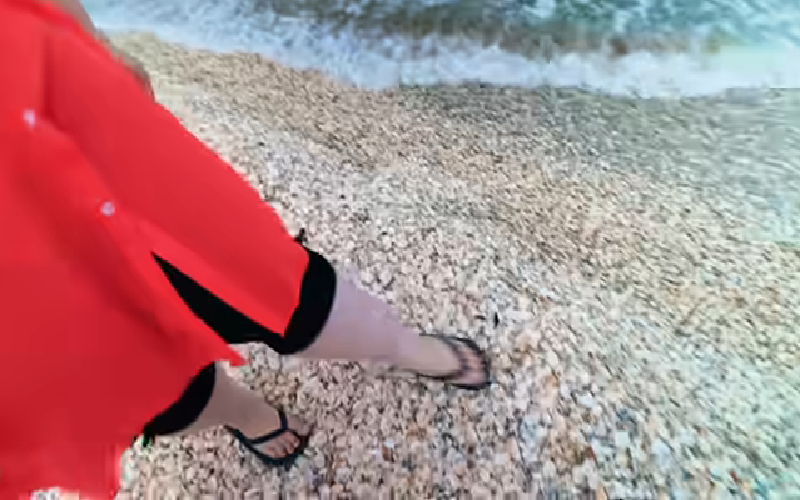At ITA SFU there is a class of hydroacoustic equipment simulators, which allows you not only to visit models of real-life ports in our country, but also to carry out unique research.
The Department of Electrohydroacoustic and Medical Technology INEP SFU is rightfully considered one of the founders of nonlinear acoustics in the country. Competent specialists have been conducting research here for about 50 years.
In 1981, the “Imitation-full-scale hydroacoustic complex” (“INGAC”) appeared at the department. It includes two hydroacoustic anechoic pools, a class of hydroacoustic equipment simulators, a complex for monitoring the seismoacoustic situation in the near-surface and deep layers of the sea, and an automated installation for measuring the parameters of piezoelectric transducers.
The grant won by the department in the 2000s made it possible to equip an entire classroom with a unique scientific installation (UNU). It is a class of hydroacoustic equipment simulators that completely recreates a ship’s control room. Here, students conduct laboratory work to simulate real sea conditions.
UNU software allows you to “visit” several real ports, including the ports of Yeisk and Temryuk, recreated from video footage made specifically for the installation. A real digital map of the Taganrog Bay with all the necessary navigational signs is provided. The existing functionality makes it possible to adjust climatic conditions: you can add rough seas, wind, precipitation (rain, snow).
Visually, UNU “INGAK” is ided into two hemispheres. The top displays the surrounding area, including fishing vessels. At the bottom is what is traditionally found under water: flora and fauna.
“The installation was developed by the design bureau of marine electronics “Vector”: they have been working on fish-finding hydroacoustic equipment and simulator construction for many years. Therefore, much attention is paid here not only to visual support, but also to details. For example, if in the upper hemisphere we see a flock of seagulls, it means that in the lower hemisphere there is a near-surface school of fish in this place,” noted Pyotr Pivnev , Ph.D., Associate Professor of the Department of EGA and MT INEP SFU .
In addition to the ship’s controls, the complex includes an imitation radar and electronic binoculars. Since the installation belongs to the Department of EGAiMT, it includes an all-round sonar and a fishing gear control system. Thus, the UNU helps to simulate the descent of a trawl to different depths, monitor the capture of a school of fish, and assess the fish accumulation.
INEP SFU trains specialists involved in the development, creation and operation of hydroacoustic equipment. Due to weather conditions, it is not always possible to carry out laboratory work at sea, but UNU “INGAK” allows you to make all the necessary measurements without leaving building “E”.
“Students press virtual buttons – the same exact ones as on the echo sounder, on the all-round sonar, on the fishing gear control system. All the settings here are the same as on a real ship. Having acquired the necessary skills with the simulator, students already competently work on real equipment in natural conditions at sea,” added Pyotr Pivnev .
UNU “INGAK” covers a wide range of real tasks performed as part of laboratory work. Students in the areas of “Instrument Engineering”, “Ship Weapons”, “Application and Operation of Technical Systems of Surface Ships and Submarines” conduct experiments in such areas as acoustic measurements, hydroacoustic equipment, optoacoustics, the use of nanocomposite materials in acoustic antennas, environmental monitoring, search and mineral exploration, bioacoustics.
The research of INEP SFU students forms the basis of their final qualifying works and is translated into grants from the Russian Foundation for Basic Research and UMNIK.
“The peculiarity of UNU is that such a set of equipment is not available in any educational institution in Russia. The class of simulators themselves with a different pool of additional options can be found at various enterprises and educational institutions. There is an imitation of the cabin, climatic conditions, the same ports are registered, but there is no hydroacoustic equipment. Only we have it, on the Taganrog campus of the Southern Federal University,” concluded Pyotr Pivnev .
The Department of EGAiMT INEP SFU actively cooperates with Design Bureau “Vector”, “Aquazond”, “Black Sea-Azov Inspectorate for Technical Supervision at Sea”, “Rosmorpor” and other leading organizations of the city and region. In particular, with the Priboy plant, once one of the most advanced enterprises producing hydroacoustic fish-finding equipment.
SFU | SFEDU SFEDU GO: ship’s cabin in the educational building January 9, 202220:56 SFEDU GO: ship’s cabin in the educational building of SFU | SFEDU00:00
